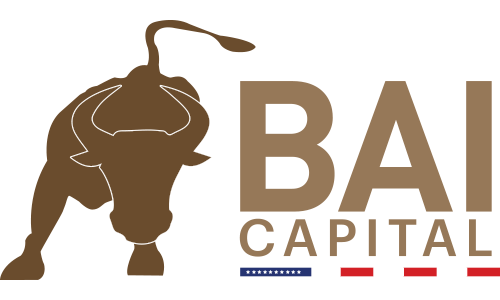Table of Contents
The US real estate market in 2020 and continuing into 2021 bucked the recession trends caused by COVID and is showing a continued resilience that many experts and analysts see no signs of slowing.
Today we look at the 2021 housing market, both nationwide and in some key regions including Florida. We will dissect the low supply high demand dynamic and how this can create a good investment opportunity, especially for investors looking long term, medium gain.
We will also compare the housing market in this recession to the last one a little over a decade ago, as well as take a look at international housing and rental markets.
LET’S GO!
Overall US Real Estate market
The US housing market is in robust shape all things considered. While many sectors of the economy have downturned from the economic effects of the Coronavirus, housing prices in many areas of the nation have steadily increased, with no signs of slowing.
2021 Predictions from Realtor.com:
Mortgage Rates Average 3.2% throughout the year, 3.4% by end of year
Existing Home Median Sales Price Appreciation Up 5.7%
Existing Home Sales Up 7.0%
Single-Family Home Housing Starts Up 9%
Homeownership Rate 65.9%
Realtor.com’s market data for the week ending February 20, 2021, shows that the median listing prices increased by 14.5 percent over last year, notching the 28th consecutive week of double-digit price growth.
However, as noted by Deloitte:
“As COVID continues “…troubled loans are rising; banks, fearing higher delinquencies, are tightening lending standards. In several sectors, rent collections have remained healthy, but largely because of higher tenant incentives and leasing concessions. Along with the evolving financial landscape, the pandemic has resulted in tectonic shifts in the way people live, work, and play, which has put unique pressures on certain property sectors.”
Real estate sectors positively impacted are: Industrial real estate, health care, data centers, and cell towers.
Real estate sectors negatively impacted include: Offices, hotels, sports, entertainment and retail.
Real estate sectors holding stable: Government, student housing.
US Real Estate Market Regions – Urban, Suburban, Rural
What we are seeing in early 2021 is a pandemic induced trend towards more comfort living while working remotely from home. When possible, many individuals and families have decided to live in lower cost areas that are more tranquil and calm during the quarantine.
Again, from Realtor.com:
“Even before the pandemic, homebuyers looking for affordability were finding it in areas outside of urban cores. The pandemic has merely accelerated this previous trend by giving homebuyers additional reasons to move farther from downtown.”
Over-valued downtown areas in major metropolises have seen an exodus throughout this period as less people are working at the office.
As more and more people decide to work from home, the trend is towards lower cost suburban and rural areas with adequate infrastructure.
And, quoting from us.jll.com:
“As the secondary economic effects (from COVID) of higher unemployment and downward wage pressure have emerged, the (housing) sector is beginning to show some signs of stress. This is not widespread, but instead has remained modest and localized to premium urban locations and secondary locations that have a poor local amenity offer.”
Florida Housing Trends
The Florida market pre-pandemic was seeing large numbers of Americans migrating for the weather, the low taxes and the quality of life. This has continued throughout 2020 and into 2021, with movement from other US locations and from abroad, especially Latin America.
Florida is a landlord friendly state combined with a higher than nation average rental market. Thus, the Florida investment climate is attractive for investors looking to buy to rent, with options to sell.
Florida is showing above national averages in these markers. Let’s take a look at the stats:
2021 Estimated Sales growth Price growth
Cape Coral-Fort Myers, Fla. 1.5% 4.3%
Deltona-Daytona Beach-Ormond Beach, Fla. 5.4% 6.3%
Jacksonville, Fla. 9.4% 5.0%
Lakeland-Winter Haven, Fla. 5.1% 4.9%
Miami-Fort Lauderdale-West Palm Beach, Fla. 3.7% 7.1%
North Port-Sarasota-Bradenton, Fla. 10.3% 6.6%
Orlando-Kissimmee-Sanford, Fla. 10.1% 5.8%
Palm Bay-Melbourne-Titusville, Fla. 11.6% 4.7%
Tampa-St. Petersburg-Clearwater, Fla. 8.7% 7.5%
Although the pace will slow from late 2020’s frenzy, fast sales will remain the norm in many parts of the country which will be a challenge felt particularly for first-time buyers learning the ins and outs of making a major decision in a fast-moving environment. Buyers who prepare by honing in on the neighborhood and home characteristics that are must-haves vs. nice-to-haves and lining up financing including a pre-approval will have an edge.
Low supply high demand in 2020 and 2021
Low supply from low inventory
Coming into 2020, supply was already low but after COVID construction ins some areas almost came to a standstill last spring and summer, not due to economic reasons, but rather enforced layoffs from COVID precautionary measures. The demand stayed high and month by month, the supply withered. Every state and municipality in the USA and worldwide has different social distancing regulations in place; restrictions that vary with time and rise and fall of COVID cases.
It seems that in many areas, there are signs of more economic activity in 2021 than in periods of 2020. With more construction, supply could match demand by the end of 2021.
High demand in part from the fast growing demographic of first time Millennial buyers:
Millennials are expected to continue to drive the market in 2021 and the participation of first-time homebuyers and older millennials is widely forecast to be elevated. Hence, the “2021 housing market” is looking to be super-competitive for home buyers. With homebuyers active and supply still lacking, the current pace of home price growth seems unlikely to change in the near term.
Housing Market in comparison to last recession
In 2020-21 there is low supply due to previous years outputs mixed with the construction restrictions of 2020. In comparison, from before and throughout the last recession there was an excess of supply. So whereas after last recession was a buyers markets, this time around its a sellers market or, suited for wealthy buyers looking to rent.
Housing Market Globally
The housing market on a global level has been significantly disrupted by the COVID pandemic. Currently in the US, average single home price is $275,000 USD.
International comparisons mid-2019 to mid-2020
Home Price-to-income ratio: Top line trends
Top 10 increases
Country Mid-2019 Mid-2020 Change
Philippines 23.63 29.92 +6.29
Indonesia 15.05 21.27 +6.22
Sri Lanka 29.6 34.98 +5.38
Iran 24.88 29.83 +4.95
Chile 13.27 17.94 +4.67
Argentina 19.48 24.09 +4.61
South Korea 16.23 19.41 +3.18
Armenia 16.11 18.63 +2.52
Poland 10.95 13.2 +2.25
Czech Republic 14.44 16.43 +1.99
Top 10 decreases
Country Mid-2019 Mid-2020 Change
Serbia 19.41 17.9 -1.51
Ukraine 13.42 11.88 -1.54
Pakistan 14.14 12.46 -1.68
Nepal 25.9 24.19 -1.71
China 30.29 28.4 -1.89
Kazakhstan 11.69 9.36 -2.33
Algeria 19.88 17.37 -2.51
Azerbaijan 19.47 16.45 -3.02
Hong Kong 49.38 43.52 -5.86
Cambodia 46.47 39.89 -6.58
Rental market highlights
Changes in favour of renting:
Australia
Quatar
US
France
Changes in favour of buying:
Mexico
Thailand
Vietnam
India
House purchase trend highlights
House price less affordable:
Indonesia
Costa Rica
Canada
House price more affordable:
Hong Kong
China
Than Merrill, Founder and CEO of FortuneBuilders, based in the US, said: “At the very least, the pandemic has temporarily detracted from confidence in the housing sector on a global scale. Uncertainty brought about in the wake of COVID-19 has forced prospective buyers to reconsider making one of the largest purchases of their lives at a time when employment is far from a guarantee.”
Rental market
Increases in price-to-rent ratios means that renting could be a better option than buying at the present time. This is because it suggests that the rental costs are low in comparison to the mortgage being paid by the owner.
Today’s 2021 US Real Estate Market Takeways:
- High demand in part due to millenial first time buying.
- Low supply
- Increased construction as containment strategies and vaccine rollout come into place
- Relocation to lower cost areas more conducive for remote work
- COVID related investment and economic restructuring
- Health care real estate sector up
- Student housing sector stable
- Rental up in USA
BAI Capital Real Estate Investment Hot Tip:
Archer Place: Premium Florida rental housing and upscale condos targeted towards medical professionals and university students.
As always, we can discuss your best US Real Estate Market investment option at your discretion.
***** Photo by Michael Cox on Unsplash *****


